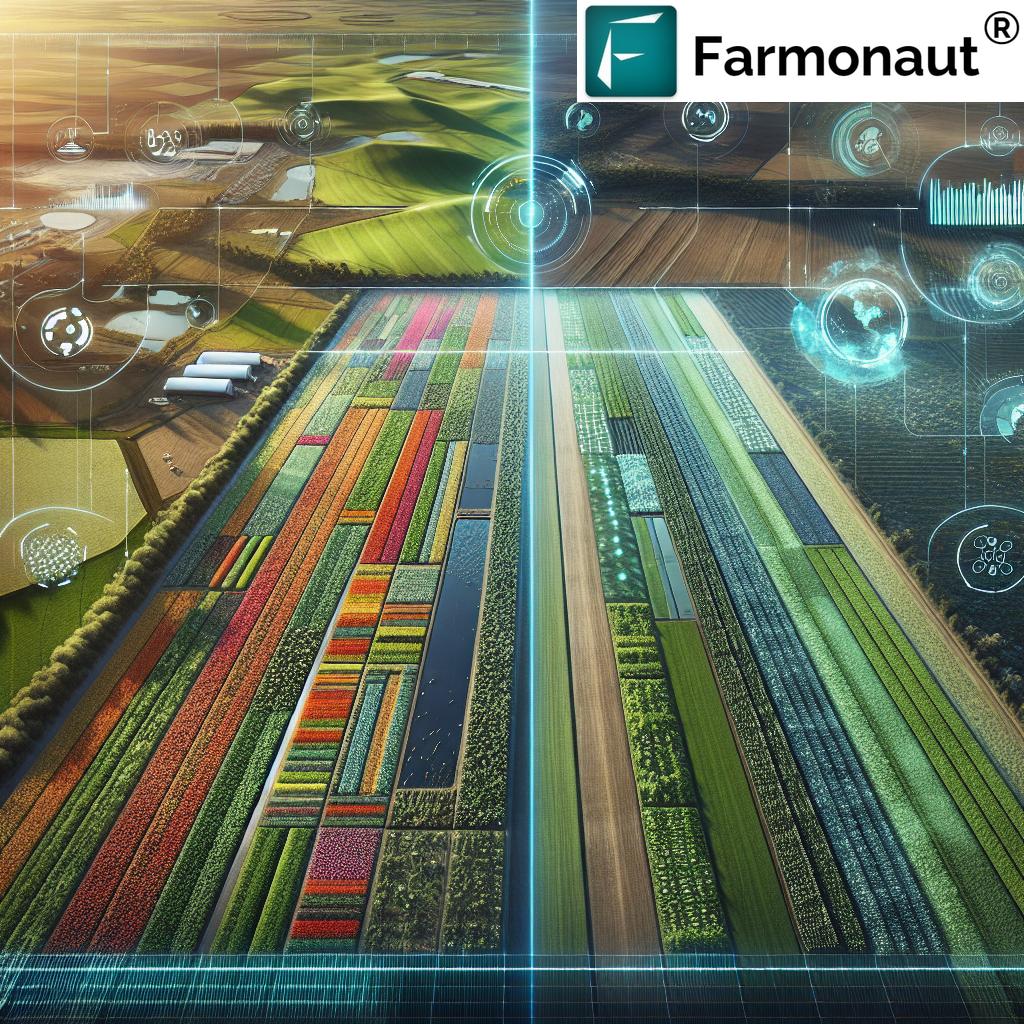“Modern telematics can reduce farm machinery accidents by up to 40% through real-time monitoring and predictive maintenance.”
Monitoring Devices Road Safety: 7 Key Agriculture Benefits
As the agricultural landscape rapidly modernizes, the integration of monitoring devices and digital systems is becoming an essential driver of road safety, operational efficiency, and sustainability. From telematics and predictive maintenance tools to proximity warning and GPS tracking, these technologies are transforming how farms and forestry operations manage equipment, protect workers, and optimize productivity.
In this in-depth guide, we will explore the vital role of agricultural monitoring systems in enhancing road safety, examine their key benefits, and provide actionable insights for their effective implementation in modern farming and forestry environments.
“Over 60% of large farms now use advanced monitoring systems to enhance road safety and operational efficiency.”
What Are Agricultural Monitoring Systems?
Agricultural monitoring systems refer to integrated hardware and software solutions that leverage devices, sensors, and digital technologies to collect, analyze, and communicate real-time data about farm equipment, worker behavior, environmental conditions, and operational safety. These systems are instrumental in ensuring machinery operates within safe parameters, operator behaviors adhere to best practices, and potential hazards are detected before accidents occur.
- Telematics in farming: Fusion of telecommunications and digital monitoring.
- Proximity warning devices for agriculture: Sensors and alerts for collision avoidance.
- Equipment tracking in agriculture: GPS and geolocation tools for asset management and logistics.
- Predictive maintenance for farm machinery: Data-driven tools to anticipate breakdowns.
- Real-time data in forestry operations: Continuous updates on field activities and machinery utilization.
By enabling precise application of resources, optimizing fleet scheduling, and continually safeguarding operators and workers, these systems are foundational for modern precision agriculture technologies.
Comprehensive Benefits of Monitoring Devices for Road Safety
- Enhanced Safety: Real-time alerts and continuous position tracking dramatically reduce the risk of accidents, injuries, and machine-related fatalities in agriculture and forestry.
- Improved Efficiency: Data insights support efficient planning, smart scheduling, and accurate resource allocation.
- Cost Savings: Predictive maintenance prevents costly downtimes, extends machinery lifespan, and optimizes fuel consumption.
- Regulatory Compliance: Adherence to international standards like ISO 11783 and ISO 25119 ensures safety and interoperability across fleets and manufacturers.
- Sustainability: Optimizing input application and tracking environmental metrics aids sustainable agriculture.
Comparison Table of Key Monitoring Technologies and Agriculture Benefits
| Technology Name | Main Function | Estimated Safety Improvement (%) | Efficiency Boost (%) | Sustainability Benefit | Applications in Agriculture |
|---|---|---|---|---|---|
| GPS Tracking | Real-time equipment location/movement | 30% | 25% | Reduces fuel consumption and idle time | Fleet optimization, theft prevention, route planning |
| Telematics Systems | Remote monitoring of performance and usage data | 40% | 35% | Enables precise input and waste reduction | Precision farming, compliance, analytics |
| IoT Sensors | Environmental and operator condition monitoring | 25% | 30% | Supports sustainable water and resource management | Irrigation, pest control, operator fatigue detection |
| Predictive Maintenance Tools | Anticipate & schedule machine repairs | 35% | 28% | Decreases unnecessary breakdown wastes | Proactive upkeep of tractors, harvesters, fleets |
| Remote Monitoring Platforms | Centralized oversight and actionable insights | 37% | 31% | Supports sustainable and integrated planning | Farm management, compliance tracking |
Telematics Systems: Revolutionize Farming and Forestry Operations
Telematics systems blend telecommunications with advanced monitoring technologies to deliver real-time data on equipment performance, utilization, and location—critical factors for road safety and efficient farming operations. Integrated telematics in farming allows managers to track field conditions, machinery usage, detect anomalies, and respond to potential risks proactively.
Key Features and Benefits
- Precision agriculture technologies: Enables precise application of inputs (fertilizers, pesticides) and irrigation by monitoring field and crop health.
- Fleet management for agricultural equipment: Facilitates tracking and scheduling, ensuring efficient allocation and maintenance of machinery.
- Geofencing to restrict access to specific areas, allowing only authorized operators and preventing theft or misuse.
- Enhanced safety for operators and workers by alerting managers to risky behaviors or equipment malfunctions.
- Supports data-driven planning and reduces environmental impact by reducing resource wastage.
According to Keshtezar, modern telematics not only enhances operational control but also delivers substantial cost savings by decreasing fuel consumption and downtime.
Discover Farmonaut’s fleet management solutions: Our satellite-based platform empowers managers to track, schedule, and optimize machinery, ensuring operator safety in agriculture and minimizing resource wastage.
Proximity Warning Systems: Prevent Collisions and Protect Workers
Large farm and forestry vehicles often operate in environments with restricted visibility and close proximity to workers, increasing the risk of collisions and injuries. Proximity warning devices for agriculture are designed specifically to alert operators to nearby obstacles, workers, or potential hazards, fostering a safer work environment.
- How They Work: These systems use radar, ultrasonic, or RFID-based sensors to detect objects or people within unsafe zones.
- Instant Alerts: Provide immediate haptic, visual, or audio feedback to operators and surrounding workers (e.g., through SensorZone technology).
- Promoting a safety culture: Encourages vigilance and adherence to safe operational practices.
SensorZone’s technology demonstrates how proactive monitoring reduces workplace injuries and enhances productivity by minimizing accident-related disruptions.
Driver Monitoring Systems: Operator Safety in Agriculture
Fatigue, distraction, and reckless behaviors are major contributors to machinery accidents and road safety incidents in agricultural and forestry operations. Driver monitoring systems act as a technological supervisor—continuously assessing operator alertness, attentiveness, and driving practices through cameras and sensors.
- Detects early signs of fatigue or unsafe driving (e.g. sudden lane deviation, eye closure).
- Provides in-cab alerts and feedback, enabling operators to correct course before accidents happen.
- Managers receive comprehensive analytics, allowing remediation and targeted training.
- Examples: Rosco’s DV6 system.
These technologies set new benchmarks for operator safety in agriculture, substantially lowering the risk of roadway and in-field collisions.
Geolocation & GPS Tracking: Equipment Tracking in Agriculture
Geolocation and GPS tracking systems are now fundamental tools for equipment tracking in agriculture. Real-time location data allows farm managers to optimize logistics, reduce delay, prevent theft, and plan equipment routing for maximum efficiency.
- Fleet management for agricultural equipment: Monitor exact location and status across large or dispersed operational areas.
- Create geo-fences to restrict machine access or flag illegal movement.
- Reduce costs: By optimizing travel distances and minimizing idle times.
-
Prevent unauthorized usage or movement.
Read more at Synox’s Connected Agriculture.
Explore Farmonaut’s Agro Admin App for real-time oversight and smarter resource deployment across multiple sites and regions!
Predictive Maintenance Tools for Farm Machinery
Unscheduled downtime can jeopardize timely operations, increase costs, and compromise safety. Predictive maintenance for farm machinery uses data from embedded sensors (engine hours, fuel consumption, vibration, and temperature) to predict potential failures before they lead to breakdowns.
- Schedule repairs proactively to reduce downtime during critical seasons.
- Extend equipment lifespan by maintaining optimal operating parameters.
- Save on expensive last-minute repairs and fuel wastage.
- Example: ELogs’ agricultural telematics monitor and analyze machinery for predictive scheduling.
Predictive maintenance tools are vital in maximizing resource utilization, minimizing costly disruptions, and supporting long-term sustainability strategies.
Learn how Farmonaut’s carbon footprinting features can further enable you to track and optimize environmental impacts alongside predictive maintenance!
Standards and Regulations: Ensuring Safety & Interoperability
Robust standards and regulations are crucial for safe and effective implementation of monitoring systems in agriculture and forestry. Key international standards include:
- ISO 11783 (ISOBUS): Governs communication protocols, ensuring compatibility between control systems of different manufacturers, paving the way for seamless integration of new technologies.
- ISO 25119: Outlines functional safety guidelines for electronic and programmable control systems in tractors, agricultural, and forestry machinery.
Adopting these international standards not only increases operational safety but also makes upgrading easier, expands options for procurement, and supports overall sustainability.
Explore Farmonaut’s blockchain-based product traceability—achieve full transparency and regulatory compliance while boosting consumer trust in food and fiber products.
Challenges & Considerations in Implementing Monitoring Systems in Forestry and Agriculture
While the benefits are substantial, adopting advanced monitoring technologies in agriculture and forestry sectors involves certain hurdles, namely:
- Cost: Initial outlay for devices and systems can deter small to medium operations.
- Data management: Sheer volume of generated data demands efficient analytics and resource planning for actionable insights.
- Integration: Ensuring compatibility between new and legacy systems is crucial for seamless operations.
- Training: Operators and managers must be skilled at interpreting data and acting on system alerts.
Despite these challenges, ongoing innovation and falling technology costs continue to increase accessibility for all farm sizes.
Farmonaut: Innovating Satellite-Based Farm Management
As a pioneering agricultural technology company, we at Farmonaut are dedicated to democratizing and accelerating the adoption of precision agriculture. Our platform utilizes satellite-based crop health monitoring, AI-driven insights, blockchain-based traceability, and resource management to empower farmers and agribusinesses globally.
- Satellite Monitoring: Leverage real-time imagery to assess NDVI, soil moisture, and overall crop health.
- Fleet & Resource Management: Streamlined tracking and management of agricultural machinery for maximum productivity and safety.
- Carbon Footprinting: Track emissions and optimize operational sustainability.
- Jeevn AI Advisory: AI-driven recommendations for field productivity and risk reduction.
- Blockchain Traceability: Secure end-to-end visibility for agricultural products across supply chains.
Read how Farmonaut supports financial access with satellite-enabled crop loan and insurance verification, reducing fraud and speeding up approvals for rural farming communities.
Integrate Farmonaut’s data into your own apps and systems with our API and Developer Docs, unlocking new levels of monitoring and operational innovation.
FAQ: Monitoring Devices & Safety in Agriculture
1. How do monitoring devices enhance road safety in agriculture?
Monitoring devices provide real-time alerts, track equipment movement, detect unsafe operator behaviors, and help prevent accidents through proactive warnings and predictive insights.
2. What is the role of telematics in farming?
Telematics in farming supports data-driven decisions on resource allocation, fleet management, and input application, improving efficiency and operational safety.
3. Are these systems suitable for small farms?
While initial investments may be higher, declining technology costs and flexible subscriptions—like those from Farmonaut—make advanced agricultural monitoring systems attainable for farms of all sizes.
4. How do predictive maintenance tools reduce costs?
By anticipating wear and breakdowns, these tools allow scheduled repairs, minimizing emergency downtime and maximizing machine lifespans.
5. How does Farmonaut ensure data privacy and security?
We follow robust digital protocols and leverage blockchain for secure traceability and supply chain transparency, ensuring user data remains protected and authentic.
6. Why is adherence to international standards like ISOBUS important?
Compliance ensures that different machines and devices from multiple vendors can communicate and work together, enhancing flexibility and long-term technology integration.
Conclusion: The Future of Monitoring Devices for Road Safety and Efficiency in Agriculture
The rapid implementation of monitoring devices across agricultural and forestry operations is revolutionizing safety, resource management, and sustainability. These systems—from telematics and predictive maintenance tools to proximity warning devices and GPS tracking—offer actionable insights, enable precise application, and foster real-time feedback for operators and managers.
At Farmonaut, our mission is to make advanced, affordable monitoring and management solutions available to every farmer, agribusiness, and institution globally. By harnessing the power of satellite data, AI, and blockchain, we are driving a new era of efficiency, road safety, and sustainability for all stakeholders in the agricultural ecosystem.
Unlock the full benefits of modern agricultural monitoring systems—optimize your operations, protect your workers, and secure your farm’s future today!






















